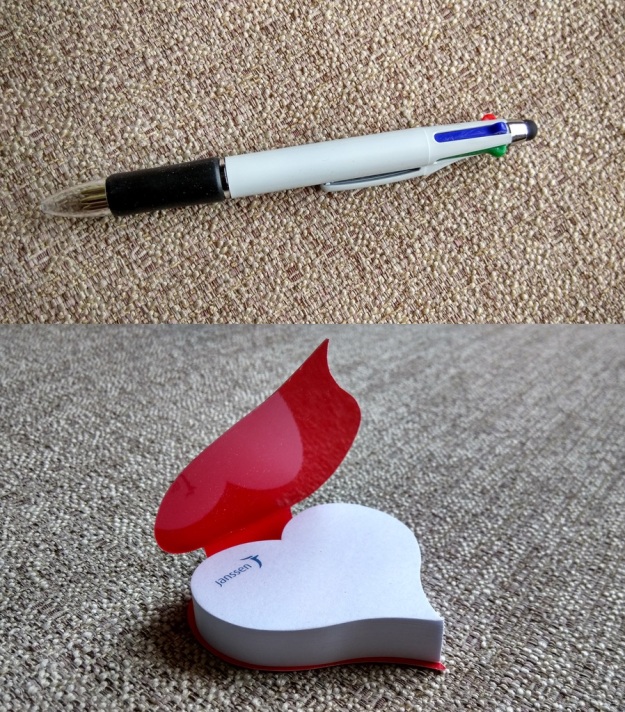Guest Blog: How to pick the perfect giveaway for your event
Swags gotta have swags!

If you’re anything like me, and by that I mean cheap and love freebies, you would relate marketing events and fairs to a shopping trip for practical stuff you’ll need for the coming year or so. When I’m at such events, I’m usually also on the lookout for freebies I can get concrete use out of. Swags such as pens, notepads and T-shirts are very common at events and for good reason – they’re things everyone needs on a daily basis. In other words, they’re practical. But practical as they are, you don’t always have to go for the same old pens and T-shirts. If you prefer to stand out, you could opt for more creative giveaway ideas.
The basic aim of a swag is to lure event-goers to your stand. That’s the very first step to getting people interested in what you’re offering. Hook them in with a good freebie and proceed from there. From the point of view as a freebie-consumer, you could have the most mundane and mainstream product/service and your stall could be the dullest one in the entire event hall. But if you’ve got an attractive-enough giveaway, I’m making a bee-line for you.
The last event I’d gone to was a work fair some two months ago and while I was looking forward to seeing what job offers there were out there, I was personally more excited about the freebies. They definitely fulfilled their aim of luring me to the different job stalls as I managed to score a number of interviews. But I was perhaps a little over-excited about the freebies which may have compromised my composure during the interviews!
When it comes to choosing the perfect giveaway, you could always go safe or go for something less conventional. With so many options for you to choose from, it can be rather overwhelming. Here’s one easy tip to follow – swags needs to have swag. Given that I’ve never had a green thumb nor been a fan of flowers, a great example of what your giveaway (from my point of view) shouldn’t be like is a pot of flower. The best swag should satisfy the basic criteria of being practical, light, small and easy to print on and cost-effective. A pot of flower is simply the exact opposite of these.

What the perfect giveaway should be
Practical
A pot of flower sits in the corner of the room and serves no purpose besides taking up space. Plus, I’d have to water it every day – what a chore!
This is key. Items such as T-shirts, pens and thumb drives (they could only be 512mb and I’d still take them in a heartbeat) fair well as popular giveaways for this very reason. They’re items people can use over and over again. I’ve been using pens I got from such fairs for as long as I can remember and in fact don’t even remember the last time I actually bought one.
Light & small
Imagine lugging a pot of flowers all around the fair and on the bus/train home. Sure, it could make for a good conversation starter but I’d very much just prefer a photo of it, thanks.
Nobody, not even freebie-loving me goes to an event with a huge bag with which I can fill freebies. That’s just a tad bit too excessive. That being said, a giveaway needs to be small and light enough in order for it to be practical enough to be taken away.
Easy to print on
Hey let’s print our logo on this petal and have it wilt and fall! No.
If you haven’t already figured this out, your primary purpose of having a stall at a marketing event is to – duh – market your brand! The whole purpose of giveaways is to *drumroll* give away an item by which event-goers will remember you. And if your brand or logo isn’t indicated on the giveaway, chances are that nobody’s going to remember where they got the swag from.
Cost-effective
Forget the pots, flowers are expensive enough – ask anyone with a girlfriend.
You’re guaranteed to be the most popular stall in the event hall if you’re giving away a trip for two to Las Vegas as a promotional item. But unless you’re also harvesting bills or Bill Gates from your pots of flower, that’s obviously unfeasible. Since you’re going to be giving away these items for free, you have to consider the trade-offs. It’s important to not go overboard. Set a strict budget and stick to it.

Another great example of a good giveaway is food. It’s practical in the sense that it satisfies hunger, is a light snack and small enough to fit in your stomach. That’s unless, of course, what you’re giving away is free steak in which case does not satisfy criteria #4. I remember being so hungry at the job fair that I was absolutely famished by the time I got to the PepsiCo booth. I needed to satiate my hunger and drown out the dreadful melodies being churned out by my stomach juices. That resulted in my shameless munching on Doritos as I was speaking to the PepsiCo representatives – probably why I didn’t get the job. But hey at least I got a free bottle of Mountain Dew after – score! Kinda.
Other items I picked up from the fair include this four-coloured-inked pen and heart-shaped notepad. They do satisfy the criteria of a good giveaway but given that I already have loads of pens and notepads lying around at home from previous fairs, I haven’t had much use for them just yet.

Hands down my favourite giveaway from the job fair is this tote bag from Estrella Damm’s stall. Given that many supermarkets are now charging consumers for plastic bags, this is an extremely handy item. You’re saving money as well as the Earth! Plus, it can be used to carry all the other freebies from the other stalls, unless someone inadvertently picked up a pot of flower. It’s also simple and versatile enough design that I’d carry it on a regular day out as well. In fact I loved it so much I took a second one when everyone had their backs turned – or so I thought. Suffice to say, I didn’t get this job either!

In a nutshell (just FYI nutshells don’t make for good giveaways), the main purpose of a freebie is to market your product/service. You want your presence to be felt everywhere. Think of a marketing event as a point where you disseminate information regarding your brand. You’re there to promote yourself and besides networking and chatting with event-goers, another way to do that is through these freebies.
Have you ever seen anyone give away a pot of flower as a freebie? Have you ever shamelessly stuffed your face with food giveaways? What’s the favourite giveaway of yours that you’ve taken? What are some of the most unique freebies you’ve seen around? Do share some of your freebie stories with us!
AUTHOR BIO
Lin’s an all-rounder in terms of physical shape. Her weekly schedule revolves around Printsome, football and abhors cutting her nails.











 Having already prepared your strategy and objectives for attending an exhibition as well as completing the trade show Marketing Plan, you now need to produce a working budget. The budget needs to be flexible and, as a guide, the trade show cost is normally three times the cost of the exhibition space.
Having already prepared your strategy and objectives for attending an exhibition as well as completing the trade show Marketing Plan, you now need to produce a working budget. The budget needs to be flexible and, as a guide, the trade show cost is normally three times the cost of the exhibition space.





